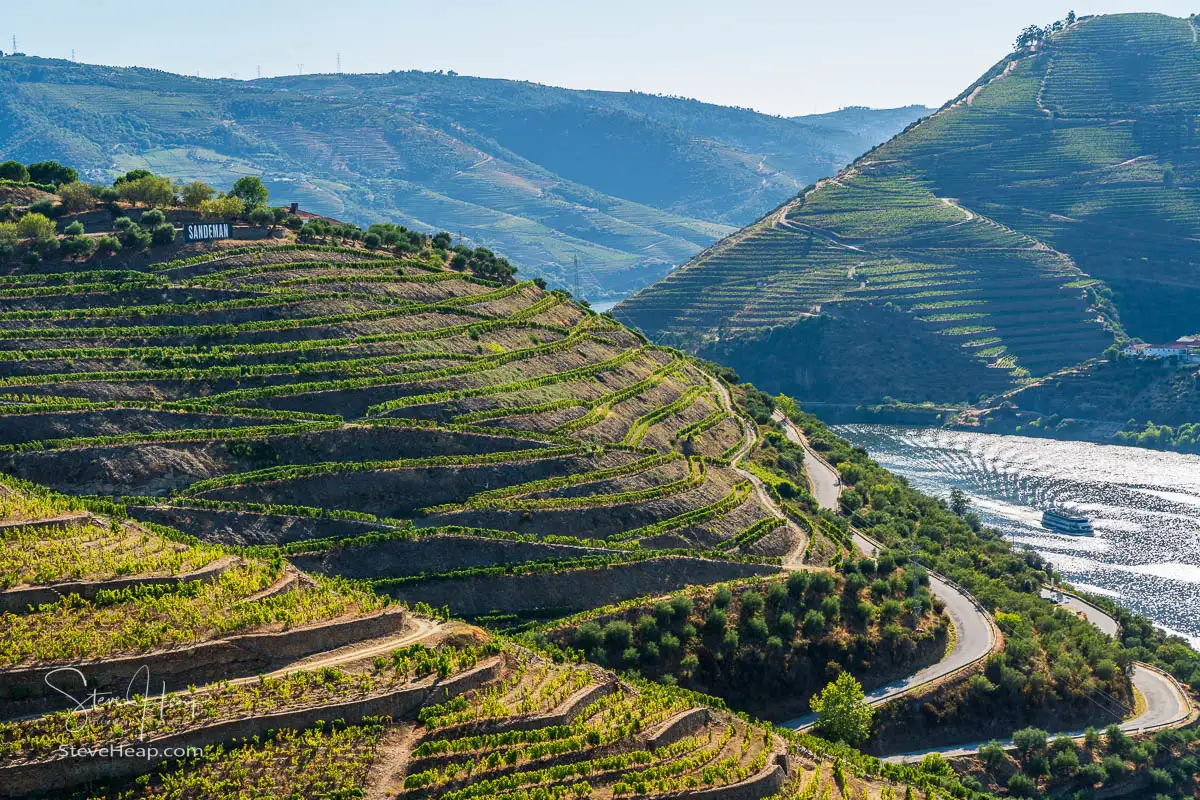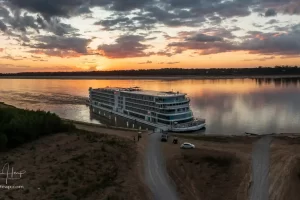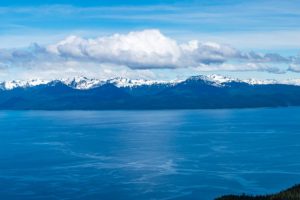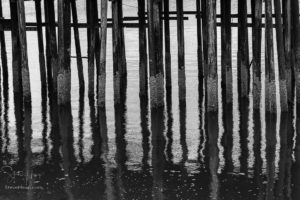After an exciting (and exhausting) time walking the streets and hills of Porto, we left at dawn to begin the cruise up the Douro River. Before 1971, traveling on the Douro River was far more dramatic than it is today. The Rabelo boats that transported wine in barrels from the vineyards to Porto had to contend with fast currents, submerged rocks and steep rocky banks along much of the journey. The first dam was started in 1964 and finished in 1971 and by 1985, all five dams on the river had finally been finished and the entire journey from Porto to Barca D’Alva on the border with Spain, was now navigable, for a total of 210 km. This particular cruise with Viking, marketed as Portugal’s River of Gold, sails up the river and then back down to Porto. The first day navigates two dams and ends the day moored at Pinhao.
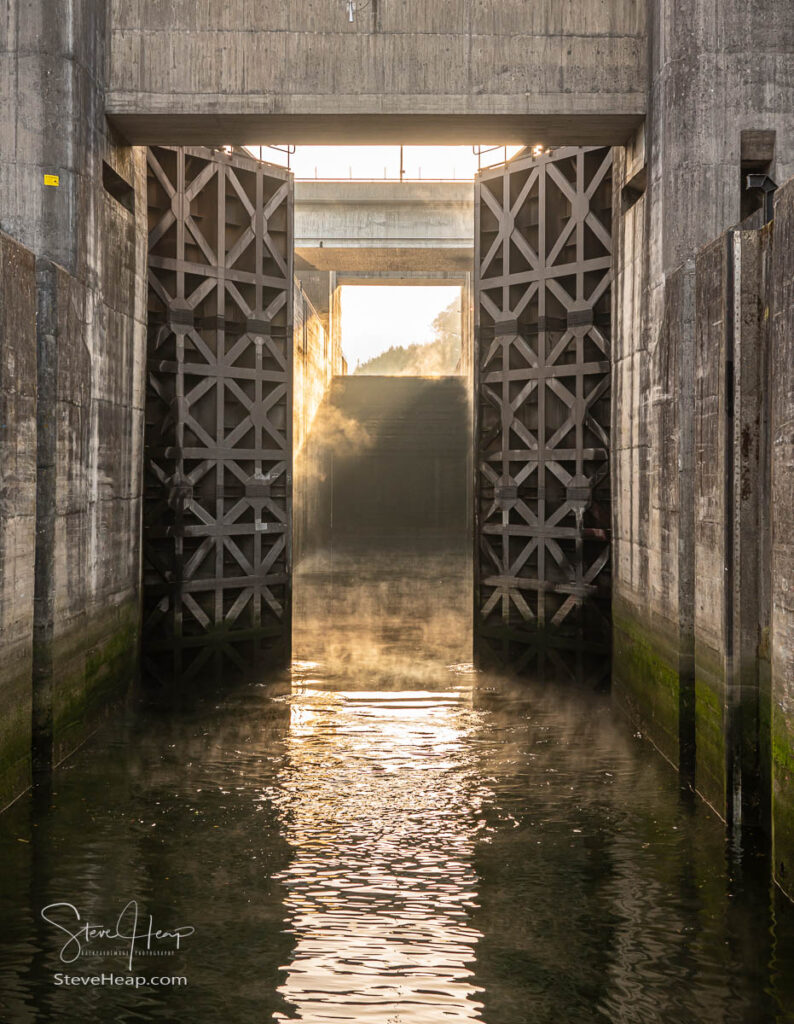
Almost looks like the gates of hell opening with the early morning sun shining through the opening lock gates on the first dam that morning! But the common thing with all these locks is that they are very narrow (the boat just fits in) and very deep! Quite an experience! The Crestuma-Lever dam was the last to be built and rises 14m (about 43 feet) in height.
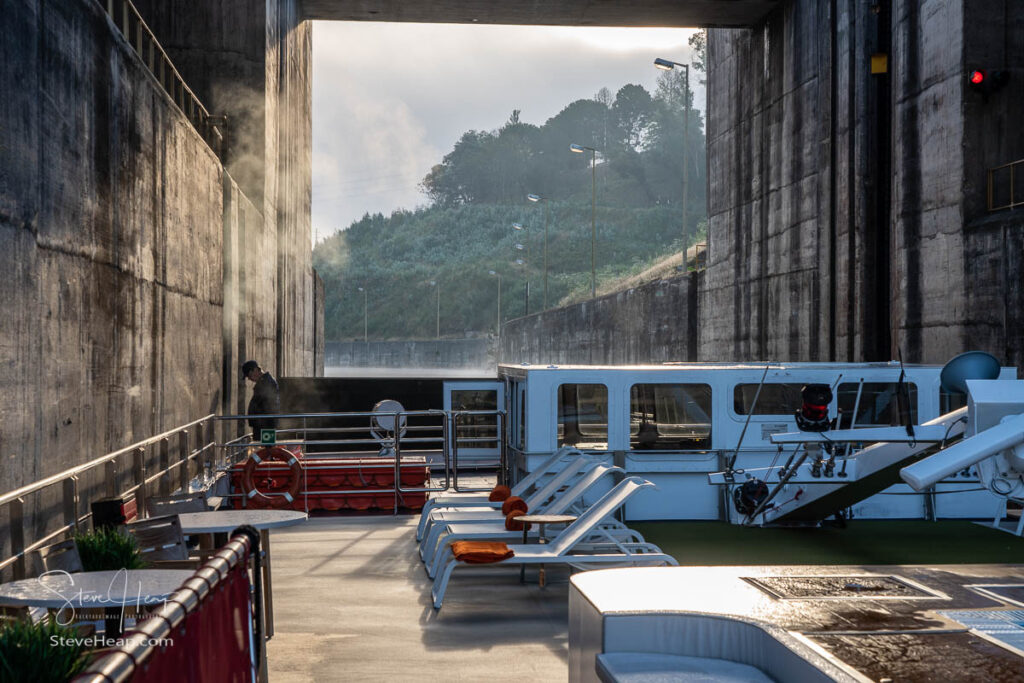
As you can see, it is a tight fit and the infrastructure on the top deck of the boat is laid to one side to allow us to sail out of the lock once we have got to the new level.
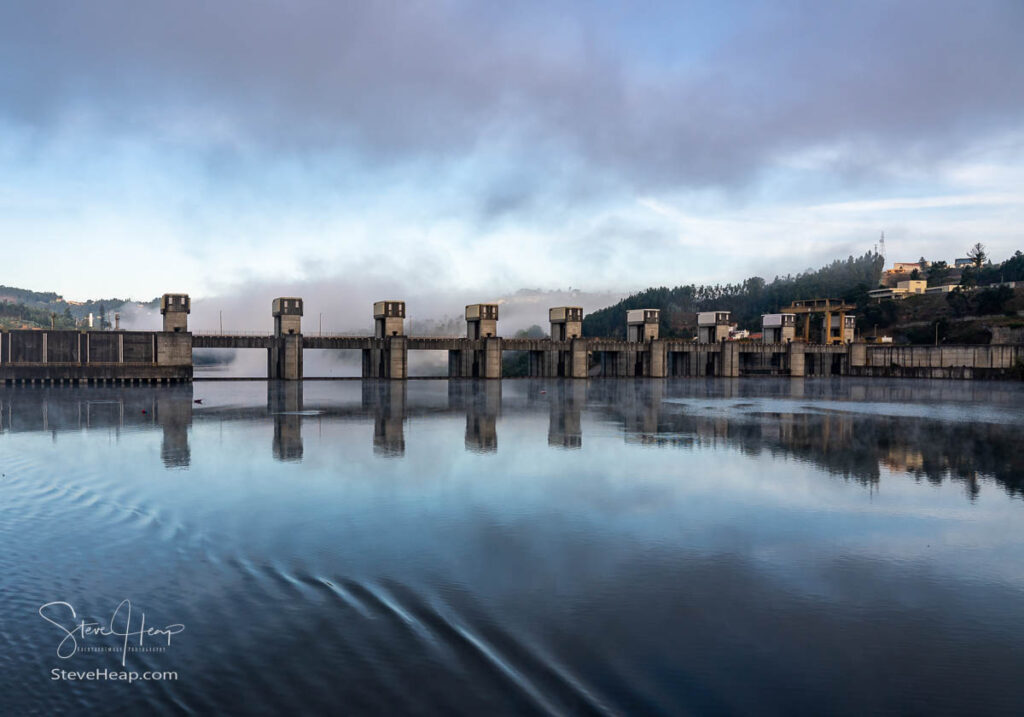
Once we leave the lock, you can see how calm the water is as the early morning mists rise from the river far below. I was also impressed by this photo of a small boat moored by the side of the river as we made our way further upstream – very pastoral!
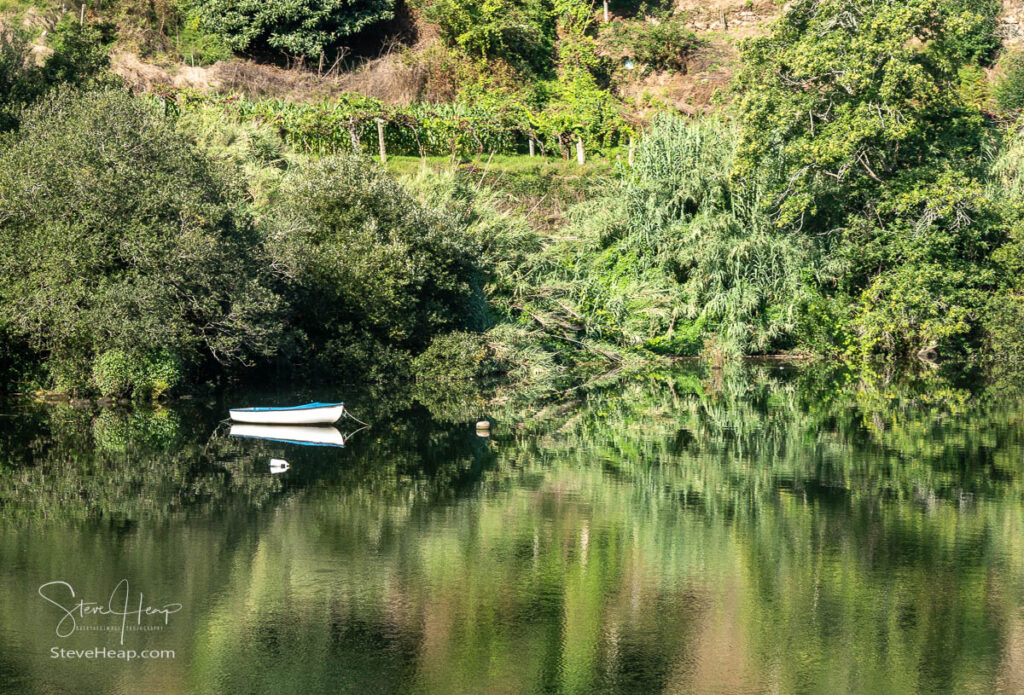
All along the riverbanks of the Douro you see the landscape altered to form the terraces or small flat areas for vines or other crops as the walls are carved out of the slopes. Here is an old Quinta nestling among its vines as we sailed upstream:
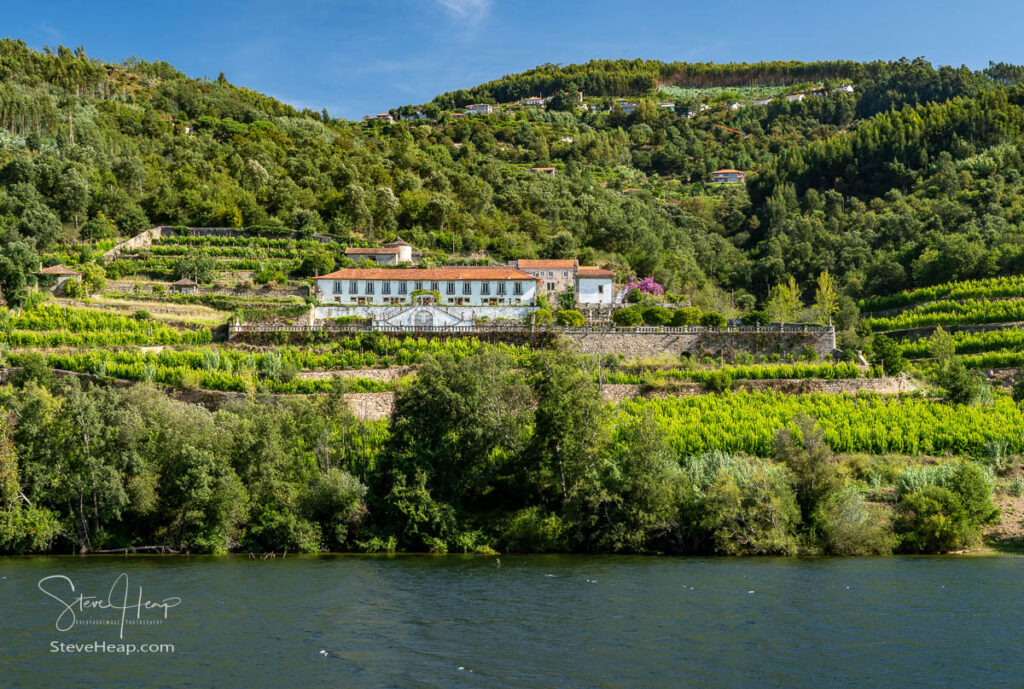
And of course, other cruise boats are about the only other traffic you see on the river these days. Most of the wine or port is now transported by trucks along the river rather than by boat.
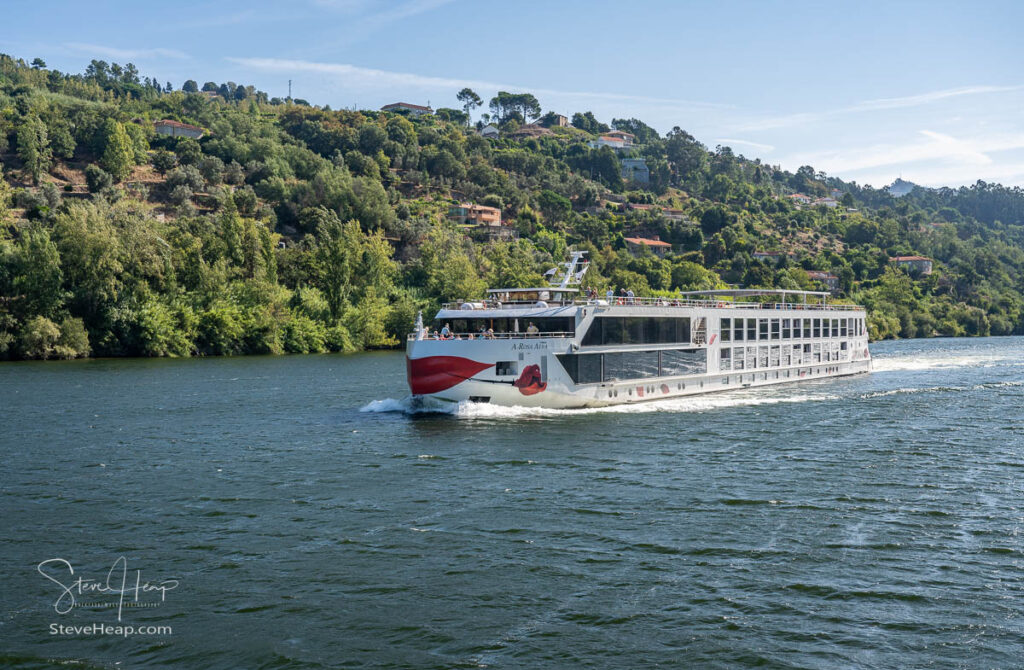
After about 3 hours of cruising, we reached the second dam. Each of these is also used to generate electricity, as you can see from the power lines:
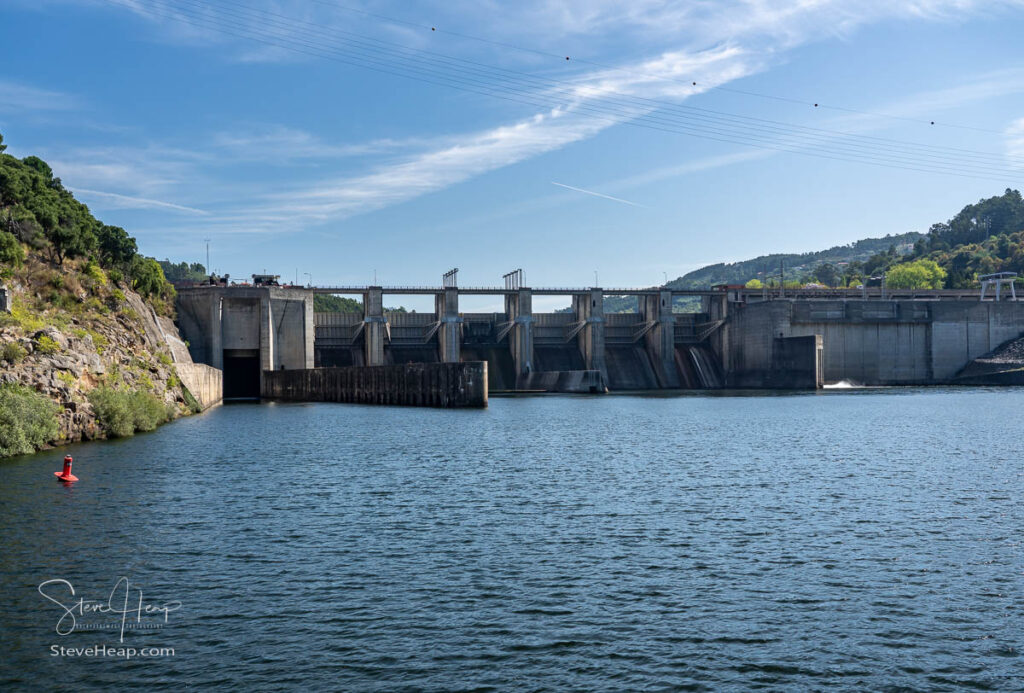
You can see our entrance to the lock on the left in this image as we readied ourselves for the 35m (115 feet) rise of the Carrapatelo Dam – one of the highest in the world.
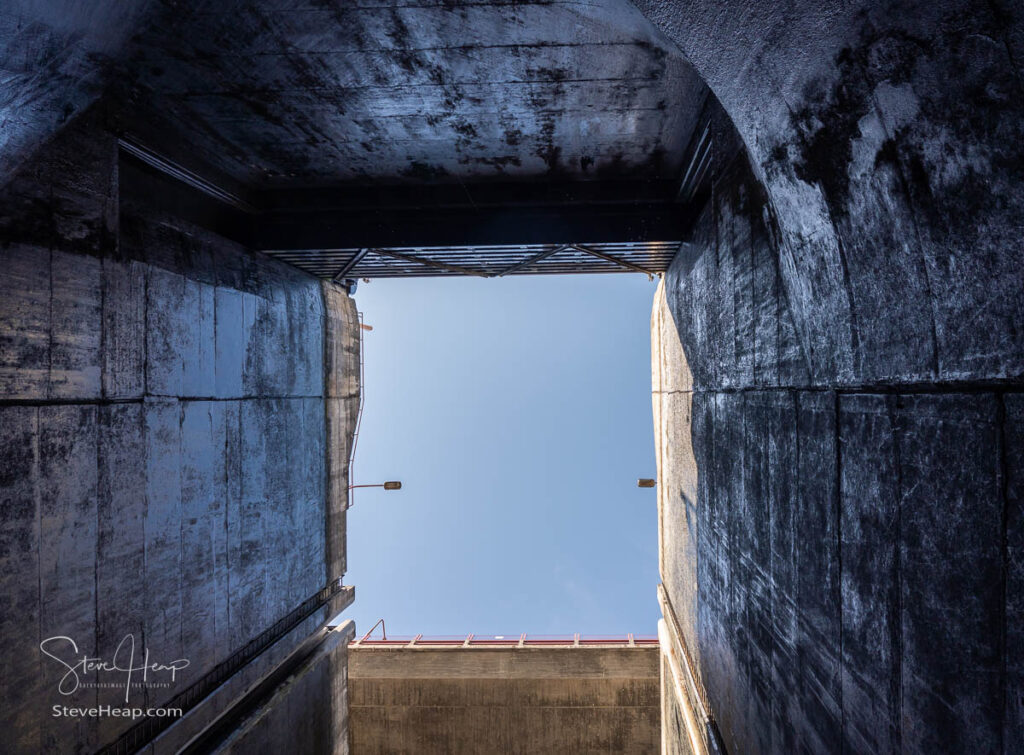
As you can see, it is pretty dark once those lock gates close! Shortly afterwards we docked by the side of the river to take our first tour to the famous Mateus Palace in Vila Real.
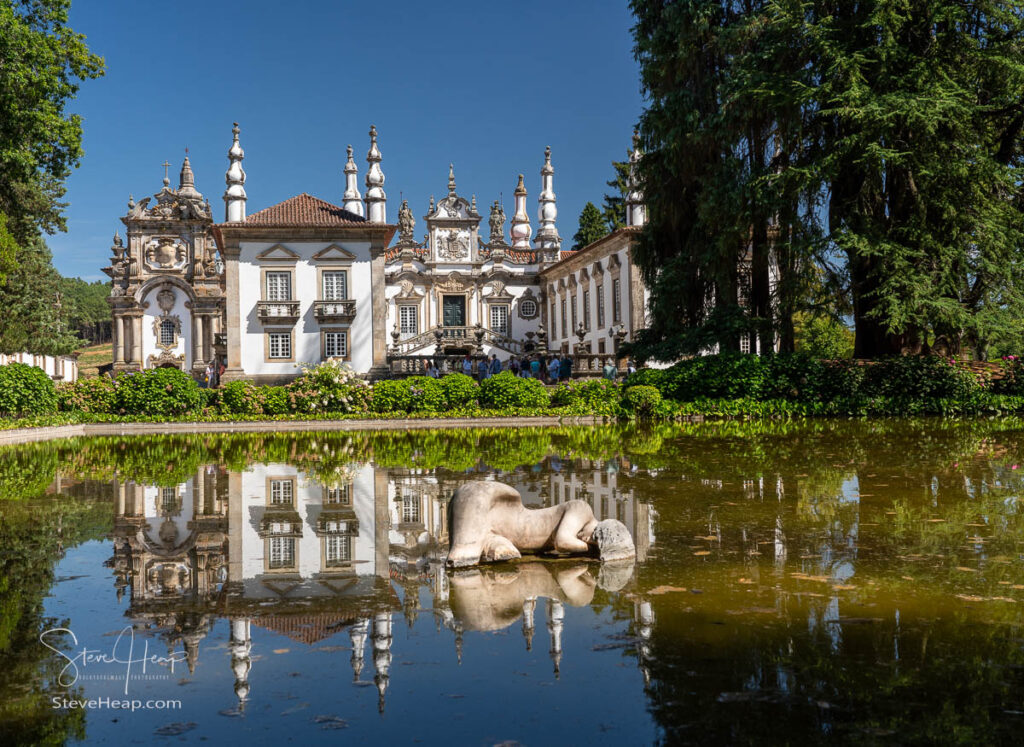
The winery dates back to the 16th Century with the current palace built somewhere around 1743. Although it is the famous symbol of the Portuguese sparkling rose wine, Mateus Rose, the wine itself was never grown here. The image of the palace was part of a branding agreement.
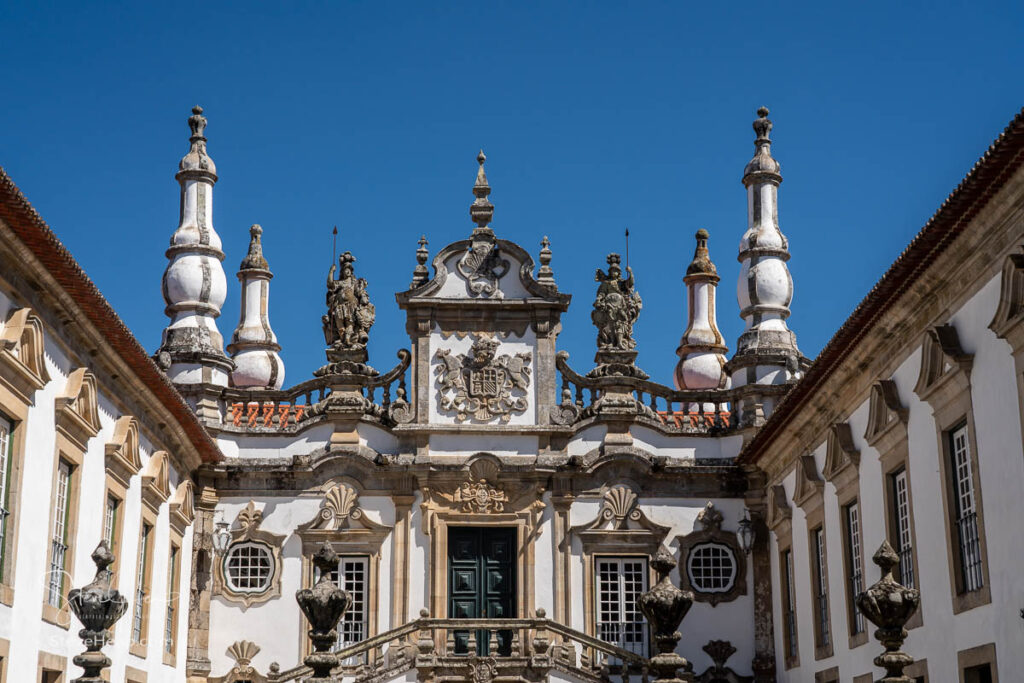
The tour included a guided tour of the palace, plus time to just wander around the grounds. The garden is particularly spectacular, having been started in the 1700s and modified in 1870 and then expanded in 1930.
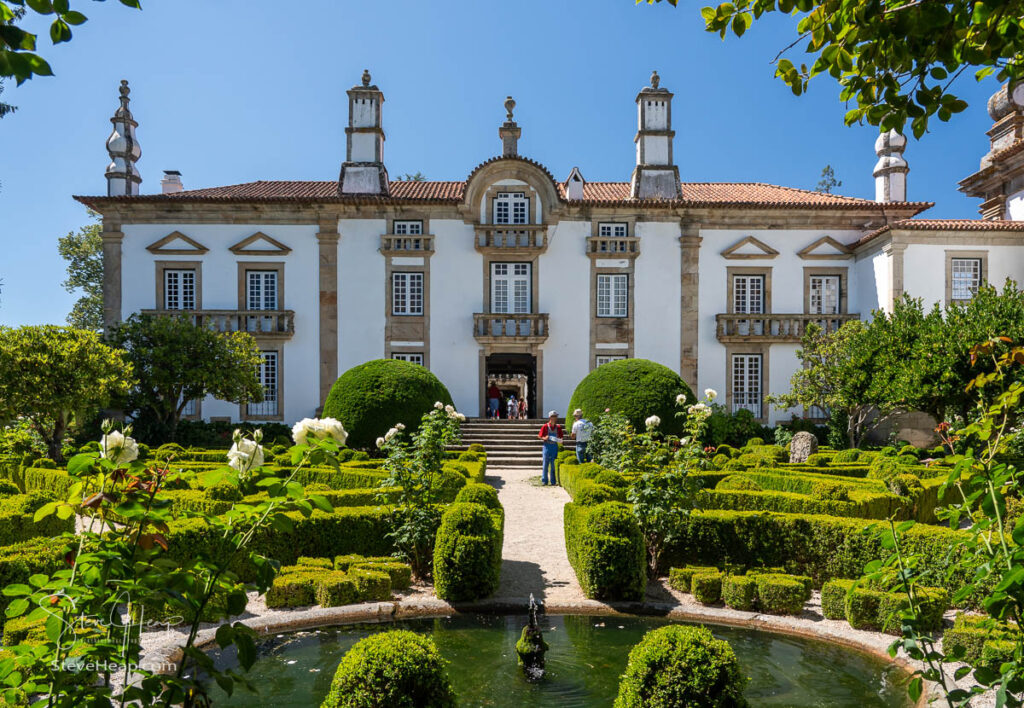
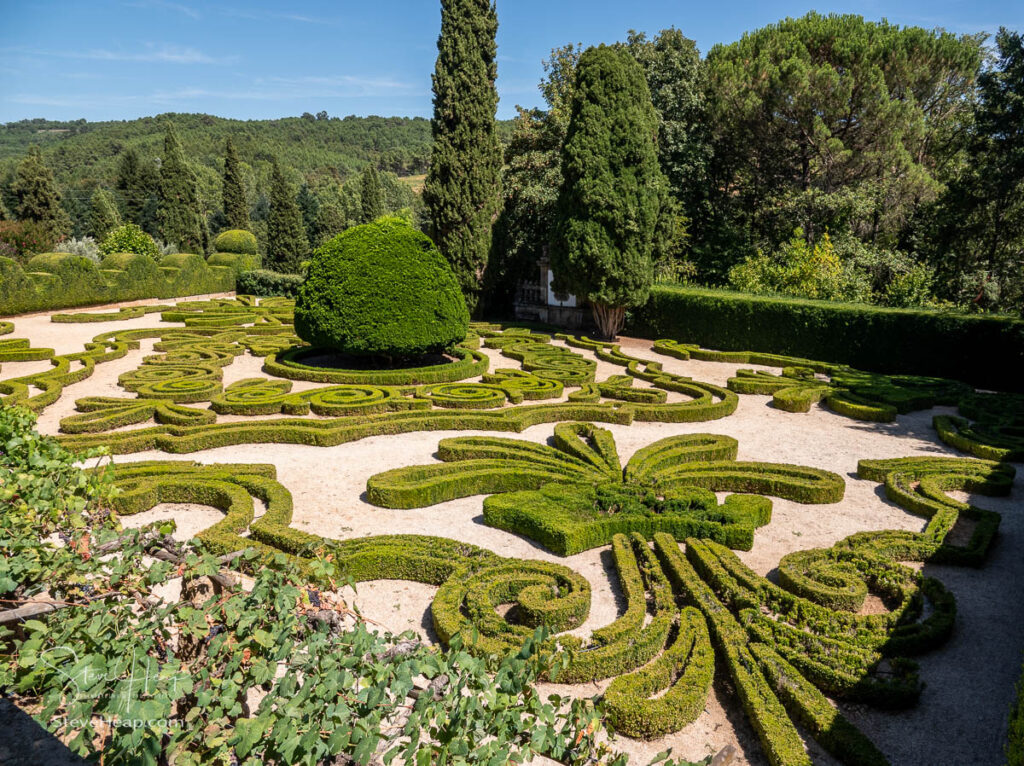
The extensive yew hedges did seem to be quite difficult to trim – I’m not sure that this arrangement of ladders would be categorized as “safe”!
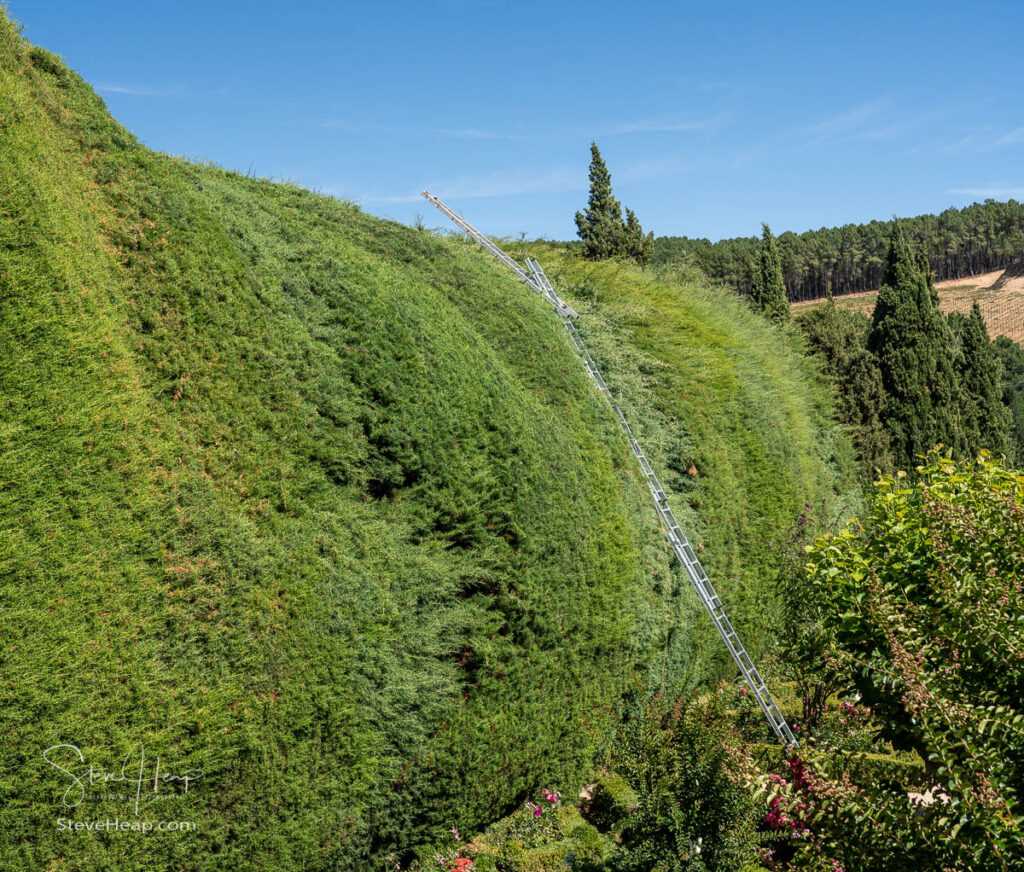
The palace also has its very own chapel or church with an ornate style very similar to the main palace:
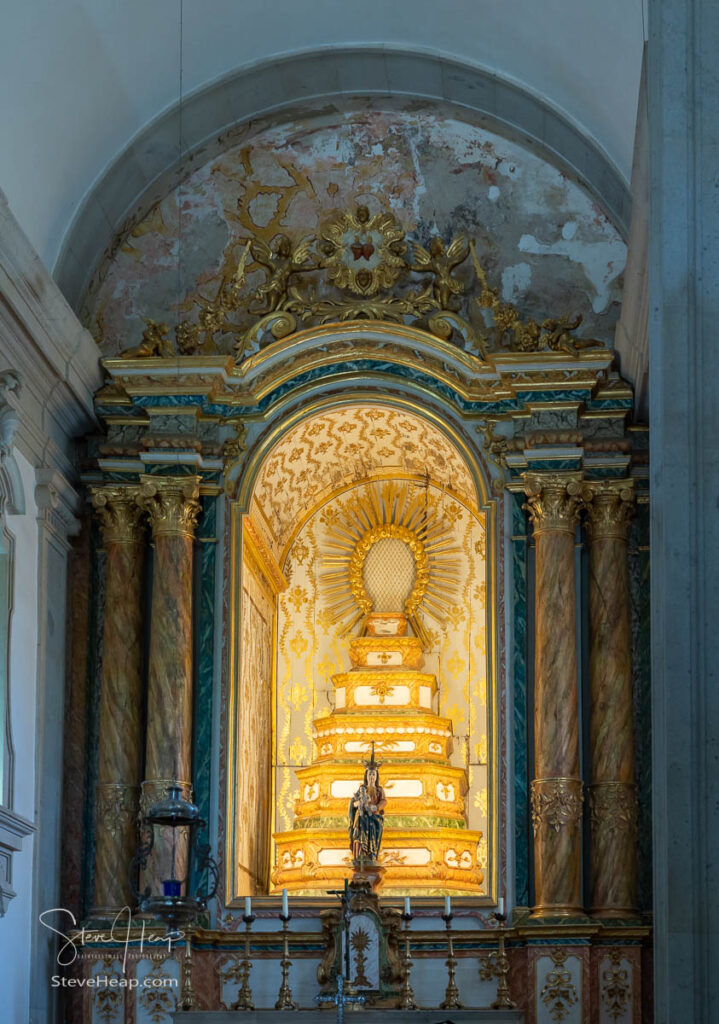
In the afternoon, we visited the Sandeman port vineyards close to Pinhao. The entire river valley is terraced at this point – it is incredibly hard to imagine just how much effort it must have taken to create each of these small walled gardens all the way to the top of the hills surrounding the river.
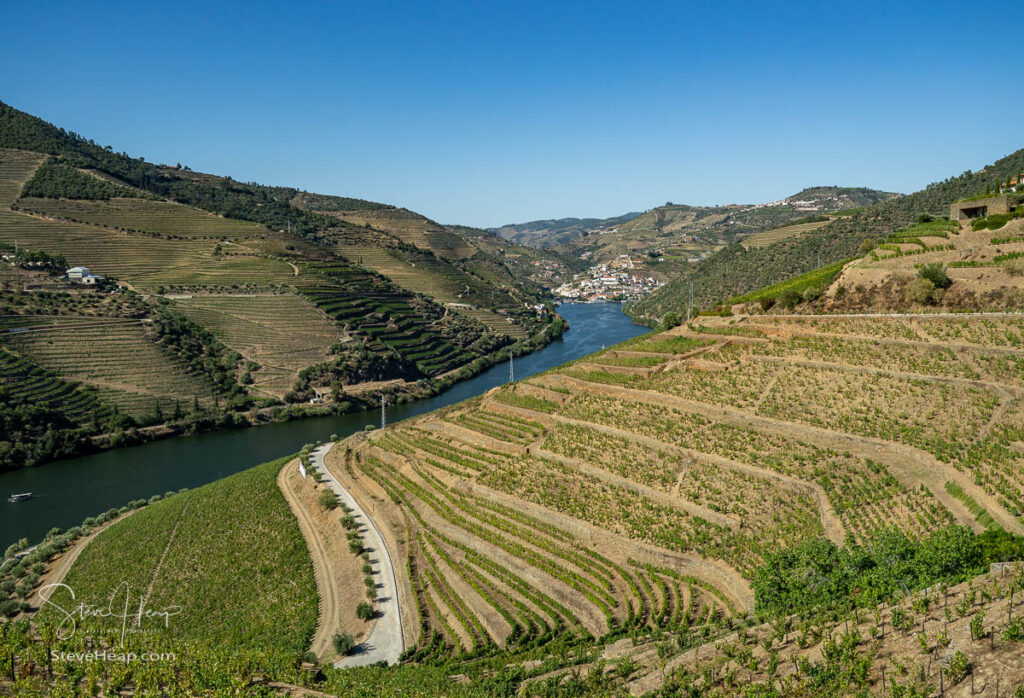
The small town of Pinhao can be seen in the distance here. That was going to be our overnight port that coming evening, but before that, we toured the cellars and learned about the growing and blending of port wine, and managed to taste some of the different styles of port with our very knowledgeable guide.
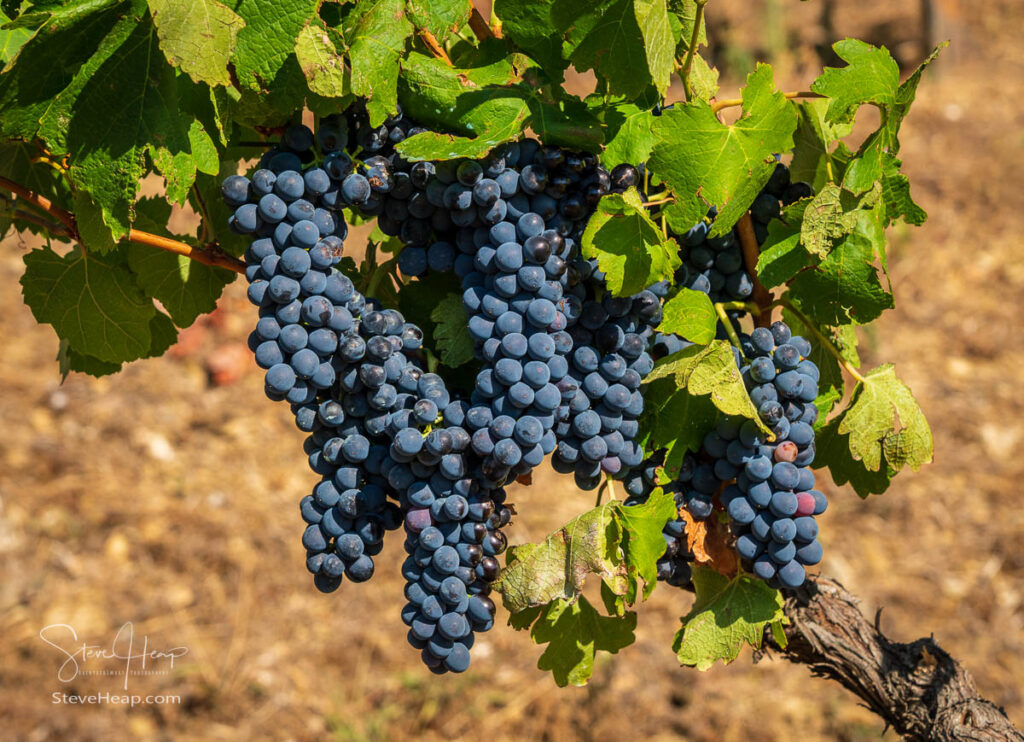
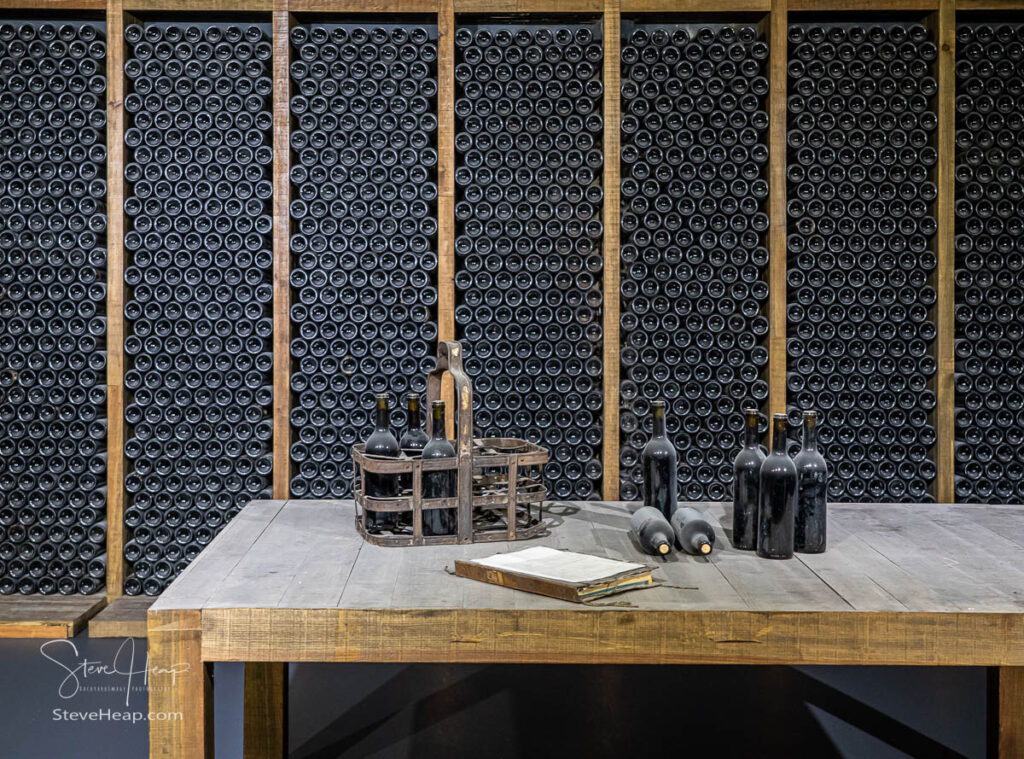
Then it was back down the very narrow winding hillside to return to our boat in Pinhao.
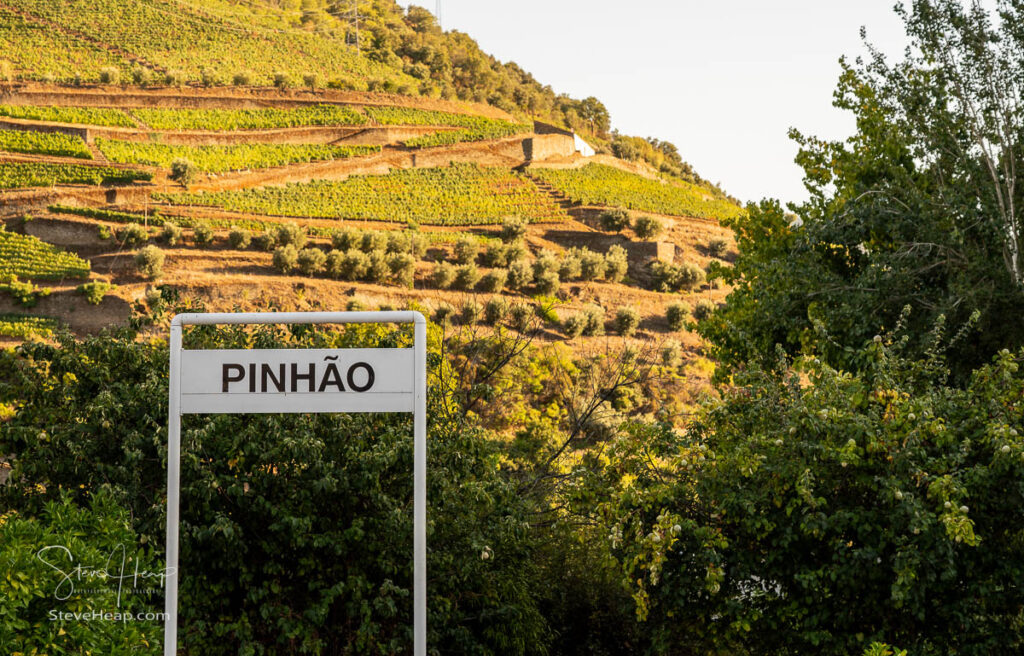
Each of these small towns generally nestled right by the river and Pinhao is particularly famous for the train station on the Douro Line that runs for 99 miles (160km), mainly along the banks of the river. The line was built between 1875 and 1887 with the Pinhao section completed in 1883. The station there is renowned as the most beautiful in the Douro with a series of tile panels designed by J Oliveira and created in the Aleluia factory in Aveiro in 1937. There are 24 panels covering almost all the walls of the building and showing the entire process of creating Port wine from the harvest to the transport of the wine in Rabelo boats down the river.
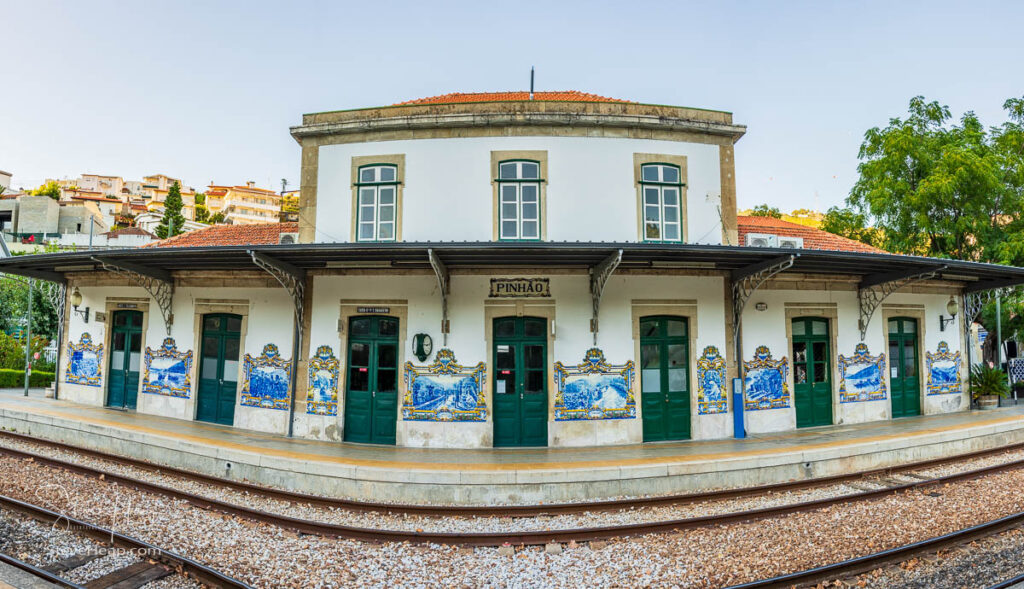
Of course, the railway line doesn’t curve like this in real life – it was the only way I could get the entire building in one photo. Although I did carefully go round and photograph each of the panels as well! These two are my favorites:
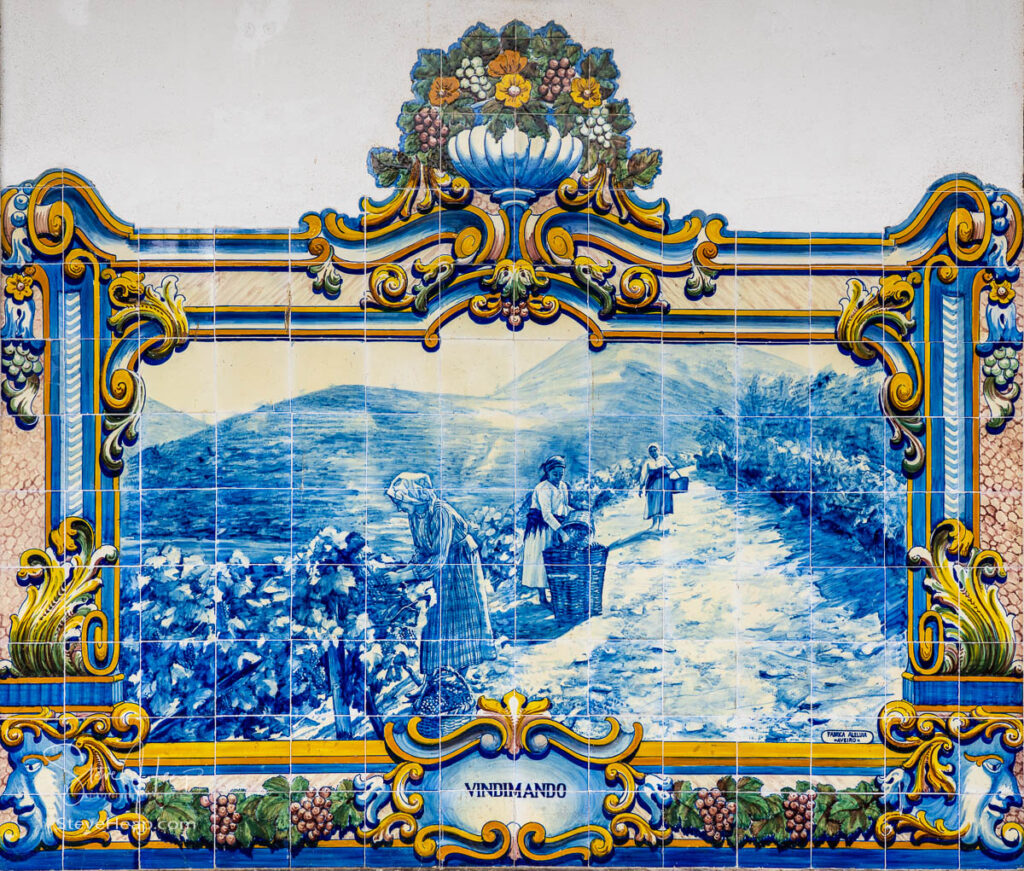
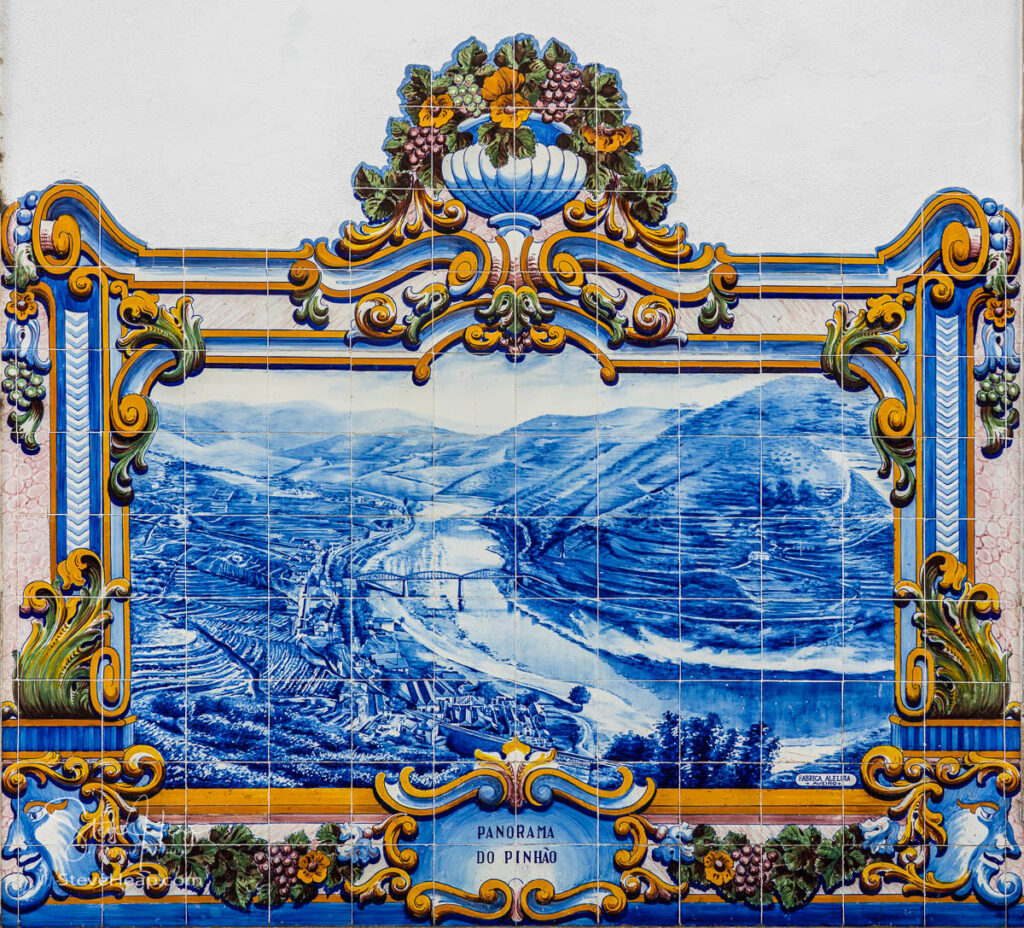
By now the sun was starting to set behind the valley walls of the Douro and time for dinner and preparation for another day on the river!
This article is part of an extended review of the Viking Portugal’s River of Gold cruise on the River Douro. The introductory article about the entire vacation in Portugal in August 2019 can be found here.
